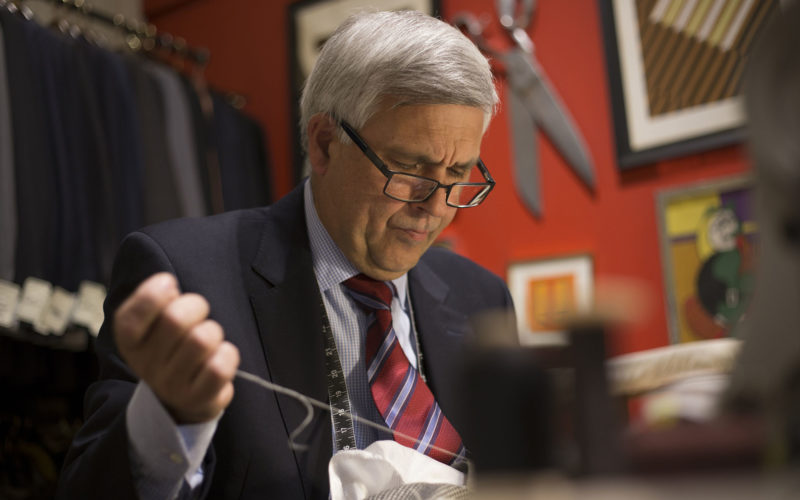Q. I’m a 75 year old male with questions about our fashion values today. In the 50’s and 60’s I learned what to do and not to do; I was taught early to remove any hats or head covering before entering a building. My mother would darn holes in my pants before I returned to wear them again. Common sense told me to take off dark glasses indoors. Women would always wear conservative clothing. Today is a total 180. You can go to a store and purchase clothing that is ripped and is acceptable to wear in public. Everywhere you go men and women are wearing hats, hoods, and head coverings of all types in- and outdoors, even at the dinner table. Country music people have cowboy hats that seem to be glued to their heads. Am I wrong about today’s values? I am shocked to see this every day at the grocery store, church, mall, and on TV. What has happened? Your comments would be greatly appreciated.
A. There certainly is no question that dressing norms have changed from the 1950s and ’60s. And it’s understandable that these test your sensibilities. I would say that dressing norms have changed consistently throughout history.
Topless dress was commonplace in ancient times. Single-layer togas were worn by men at one point; women would later wear boned corsets, with nearly a dozen layers. The scarf, then necktie, began more as foppery than professional dress. Trousers had eras when the fabrics were so heavy, scratchy, and stiff that they could be injurious. White wigs were (and in England and elsewhere still are) worn by male politicians and lawyers, and nearly every religion included a head covering that was appropriate both indoors and out. In many ways today’s low-key style is just a part of that evolution; even so, that doesn’t mean that everyone will always welcome it.
I have also heard young and not so young people point out that they view these changes as an improvement in values. They feel that staid standards, limitations, strict rules, and often expensive business uniforms are being replaced by opportunities to show creativity, individualism, and either indifference to or extreme focus on clothing.
Obviously, I generally prefer the look of authority, seriousness, and respect that draw us to a man in a fine suit, a coordinated shirt and tie, matching accessories, with careful grooming, and without a hat. But those are the old societal norms that people grew up with. Whether it was Elvis in tight pants, John Travolta in an open shirt, Steve Jobs in a T-shirt, or those country singers, past generations have seen successful trendsetters wearing quite different apparel from what the world had come to expect.
Times keep changing. Since Covid, more people are working from home; we now accept a very different level of formality. In social settings, the world has become much more tolerant of seeing a man wearing jeans or a hat But even with Zoom meetings, we do expect at least some degree of “proper dress” in any situation related to business. Also, when not in the office, there still are special occasions, such as weddings, funerals, and important meetings, where it makes sense to avoid overly-casual styles, and to dress up a bit.
Although you mention that you see this everywhere, including on TV, I have noticed that TV seems to be the only place where men still do follow the old “rules” of proper dress. I see news anchors, weather men, and politicians decked out in handsome suits, shirts, and ties – all well-tailored and well-coordinated. Because such dressing is dear to my heart, I am pleased to see it, even though it does seem to be a rarity these days.
All of that said, men wearing torn jeans, a cowboy hat, and dark glasses dining in a fine restaurant must recognize the impression they are creating. Even though I don’t like the look, it may actually project an image that makes sense for that region and that wearer.
Please send your men’s dress and grooming questions and comments to MALE CALL: Lois.Fenton@prodigy.net.









